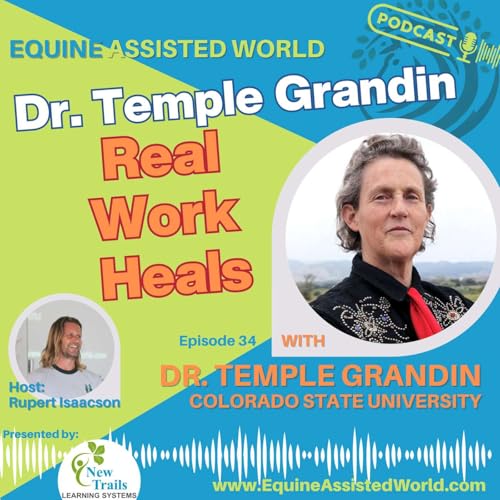What happens when autism transforms not just a child’s life, but an entire family’s purpose? In this heartwarming episode of Equine Assisted World, Rupert Isaacson speaks with Monique and Cees Jan Timmermans from the Netherlands about their son Stan’s remarkable journey — from dolphin therapy in Curaçao to finding peace and communication through horses.
Monique, founder of InKompassie, shares how her family’s experience with autism inspired her to build a holistic equine-assisted practice that helps other families find balance, regulation, and hope. Together with her husband Ian, she reflects on the lessons they’ve learned about parenting, partnership, and letting go of expectations while embracing the beauty of the present moment.
From dolphins to horses, deep pressure to patience, and family dynamics to neuroplasticity — this episode explores how compassion, movement, and nature can rewire both brain and heart.
If you want to support the show, you can do so at Patreon: https://www.patreon.com/LongRideHome
✨ “When you look with compassion — at your child, your partner, and yourself — healing begins.” – Monique Timmermans
✨ “Stu does things when he is ready. You can’t push it; you just have to recognize the moment.” – Ian Timmermans
🔍 What You’ll Learn in This Episode:
- How dolphin therapy unlocked communication and calm for Stan ([00:18:00])
- The sensory connection between body awareness, regulation, and emotion ([00:06:00])
- Why involving the whole family is key to successful equine-assisted sessions ([00:05:15])
- The origins and meaning behind Monique’s practice name, InKompassie ([00:11:25])
- How horses help children with autism reconnect with their bodies and emotions ([01:01:00])
- Teaching academic skills like math and reading through movement and horses ([01:04:00])
- The neuroscience behind movement, nature, and neuroplasticity ([00:42:00])
- How Monique helps parents find regulation and perspective through horses ([00:59:00])
- Lessons from 20 years of parenting: acceptance, patience, and unconditional love ([01:20:00])
🎙️ Memorable Moments:
- Stan’s breakthrough moments during dolphin therapy in Curaçao ([00:19:00])
- Discovering that compassion begins with the self — after a hospital scare ([00:12:00])
- Watching Stan find peace and joy with horses at home ([00:45:00])
- How Monique’s practice evolved from personal healing to community support ([00:48:00])
- “When everyone was like Stan, it would be a beautiful world.” – Monique ([01:37:02])
- Ian on balance, respect, and partnership in parenting a special needs child ([01:22:15])
- The importance of letting go of expectations and embracing what is ([01:34:19])
📚 Contact, Projects & Resources Mentioned:
Monique Timmermans – InKompassie (Equine-Assisted Practice, Netherlands) – https://inkompassie.nl
Dolphin Therapy Center – Curaçao Dolphin Therapy & Research Center (CDTC)
Temple Grandin – Author, Autism Advocate
Horse Boy Method Horse Boy Method, Movement Method & Takhin Equine Integration – https://ntls.co
🌍 See All of Rupert’s Programs and Shows:
Website: https://rupertisaacson.com
📲 Follow Us: Long Ride Home
Website: https://longridehome.com
Facebook: https://facebook.com/longridehome.lrh
Instagram: https://instagram.com/longridehome_lrh
YouTube: https://youtube.com/@longridehome
New Trails Learning Systems
Website: https://ntls.co
Facebook: https://facebook.com/horseboyworld
Instagram: https://instagram.com/horseboyworld
YouTube: https://youtube.com/newtrailslearningsystems
📊 Affiliate Disclosure: Links to books and products may include affiliate tracking. We may earn a commission if you make a purchase, at no extra cost to you. Thank you for supporting the show.
 1 hr and 30 mins
1 hr and 30 mins Oct 30 20251 hr and 42 mins
Oct 30 20251 hr and 42 mins 1 hr and 53 mins
1 hr and 53 mins 1 hr and 30 mins
1 hr and 30 mins Sep 20 20251 hr and 57 mins
Sep 20 20251 hr and 57 mins Sep 4 20251 hr and 58 mins
Sep 4 20251 hr and 58 mins Aug 21 20252 hrs and 4 mins
Aug 21 20252 hrs and 4 mins Aug 7 20251 hr and 45 mins
Aug 7 20251 hr and 45 mins

